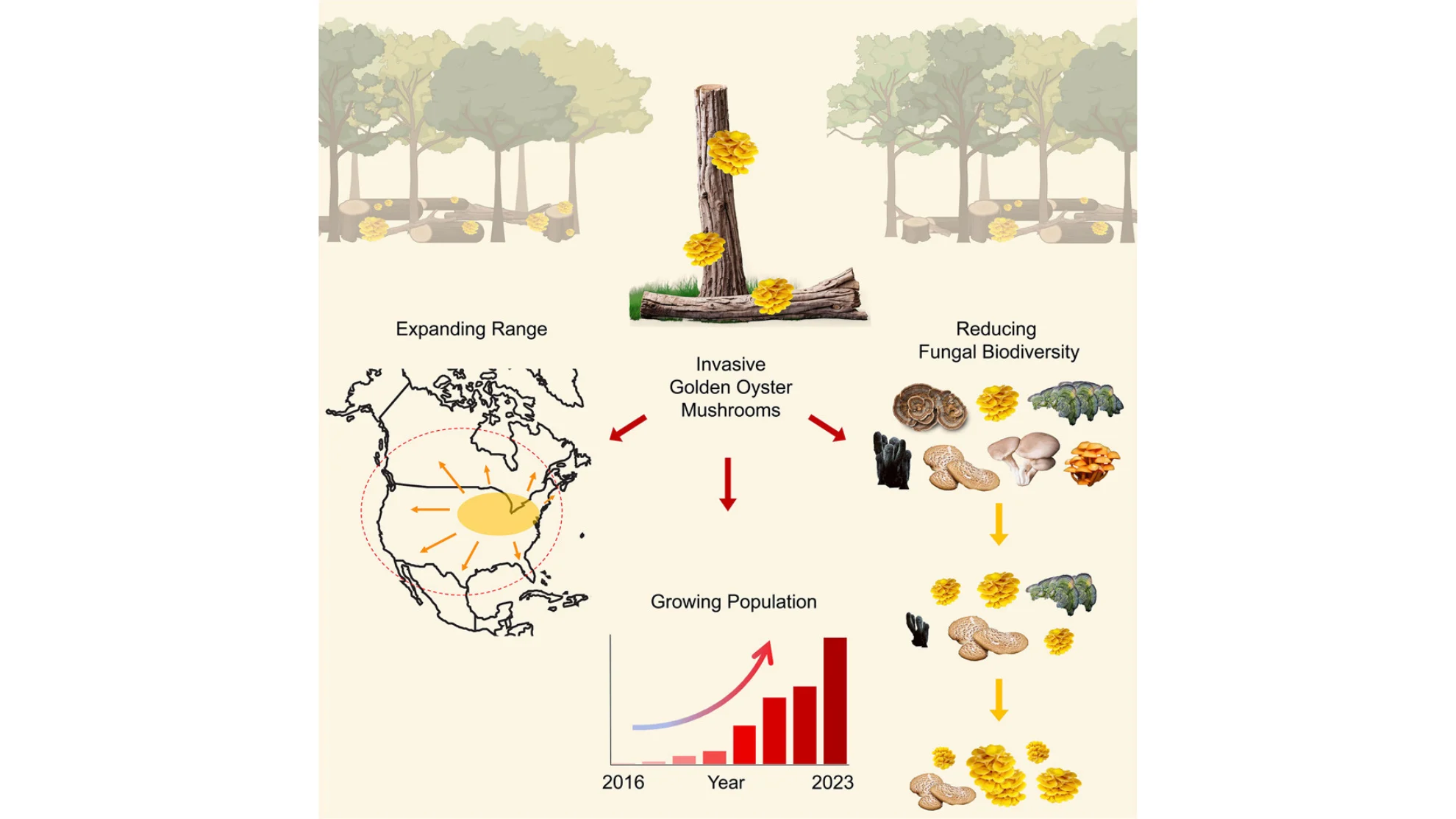
A DIY mushroom trend has become a major invasive threat in Canada & the U.S.
The mushrooms are present in 25 U.S. states and one Canadian province.
Golden oyster mushrooms have escaped cultivation and are now growing in at least 25 states in the U.S.
The invasive species has also been spotted growing in the wild in Ontario.
Golden oyster mushrooms, known for their yellow caps and nutty flavor, became popular in the early 2000s following the introduction of growing kits that allowed people to grow them at home.
It’s a trend that continues to this day. A quick search on TikTok suggests the kits continue to be sold and used in parts of Canada and the U.S.
The mushrooms were first reported in U.S. forests around 2010. Earlier this month, the Government of Michigan posted a press release stating the fungi is “invading” the state’s forests, and their presence is displacing native fungal species and decreasing biodiversity.
“Trees where golden oyster mushrooms were detected hosted about half as much diversity of fungal species as trees where the golden oyster mushroom was not detected,” reads a statement by researchers from the University of Wisconsin-Madison, who published a study on invasive golden oyster mushrooms in the U.S. last month.
“Loss of native fungal diversity could have implications for the rate of decomposition and carbon storage capacity in forests. It could also deplete fungal species with rich potential for pharmaceutical development.”
Experts aren’t sure how the mushrooms escaped home gardens, but they have spread quickly since then.
Golden oyster mushrooms prefer warm, humid environments, so researchers ran climate models to predict how the species would fare in North America as temperatures warm. Those models predicted that the species’ range will continue to expand in North America, allowing it to disrupt more ecosystems.
The team is now looking at what makes this species a successful invader in North America, in hopes of finding ways to eliminate it from the wild.
“Since fungi provide ecosystem services in unique niches, loss of native species could dramatically alter how an ecosystem functions,” the study’s authors write.

The golden oyster mushroom range is increasing in North America. (Invasive golden oyster mushrooms are disrupting native fungal communities as they spread throughout North America Veerabahu, Aishwarya et al. Current Biology, Volume 0, Issue 0)
Big benefits to cultivating native species
Native plants — i.e., foliage that naturally occurs in a region — are an important part of the ecosystem, and there are big benefits to planting them over non-native species, like the golden oyster mushroom.
Native plants and fungi support wildlife. Planting native varieties provides shelter and food for home-grown insects, birds, and other animals that benefit the ecosystem.
Native varieties save water. Native plants tend to be better at retaining moisture than non-native varieties. It's an evolutionary advantage that can translate into big savings for you, in terms of money, resources, and effort.
Natives are more weather-resistant. Canadians are weather-hardy, and so are our plants. Native greenery is more likely to survive Canada's harsh winters, rollercoaster springs, and summer dry spells, increasing the chances they'll bloom in your garden year after year.
Native species tend to require fewer pesticides. Once established in your garden, native plants are relatively easy to maintain. It's that home advantage once again: over time, native species have developed natural defenses against local diseases and 'pest' insects that can damage or kill exotic plants. If you'd like to decrease usage of harsh chemicals and encourage natural predator insects to do the work instead, native plants will help.
Header image: Golden oyster mushrooms found growing in the wild in Michigan Government of Michigan
